
Deadly poisonous tree - novice identification Season - all year Common names English yew, European yew, common yew, yew
Scientific name meaning: Taxus is derived from the Greek "Taxo" meanign to be ordered. Baccata has its origins in the Latin "Bacca/Baca" which is a berry shaped like a pearl or dung of a goat. This is in reference to the tree's round berry-like fruit
Habitat  Commonly found in and regularly associated with old churchyards, English yew can also be spotted in woodland, parks, country estates, and gardens as either a full tree or ornamental hedge. It is native to Europe, Northwest Africa and Southeast Asia. |
Overall structure 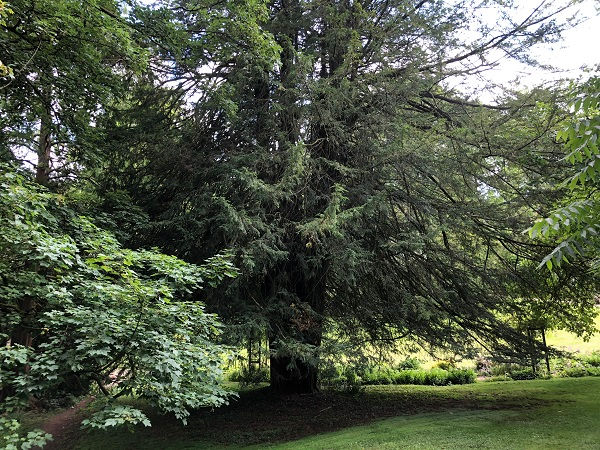 A coniferous tree growing to 25m, English yew is a long lived. It is believed some specimens in the UK are several thousand years old. As they reach around 1000 years old, the trunk expands away from the heartwood giving it the impression of several smaller trunks in a tight group. It has a broad dense canopy and has little plant growth underneath it. |
Leaves  The dark green needle leaves lie flat along the twigs. On their underside, they are a paler green. The needles are flat rather than spiky and reach 1-1.5cm in length. |
Trunk 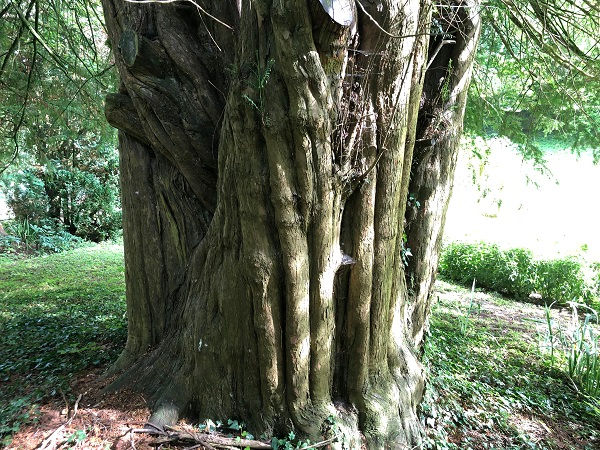 The bark has a red-orange tinge to it and the trunk is deeply wavy. As the tree approaches around 1,000 years of age, it begins to hollow out. Very old specimens can give the false appearance that they are more than one tree. |
Flowers 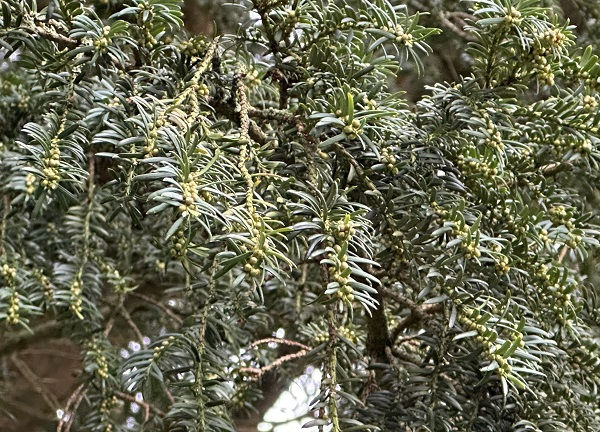 The English yew is dioecious - meaning the male and female flowers are on separate trees. The flowers appear in spring. Male flowers are small yellow-white spherical structure that open to expose a cluster of pollen releasing stamens. The female flowers look like small leaf buds, starting off green and ageing to pale brown. |
Fruit 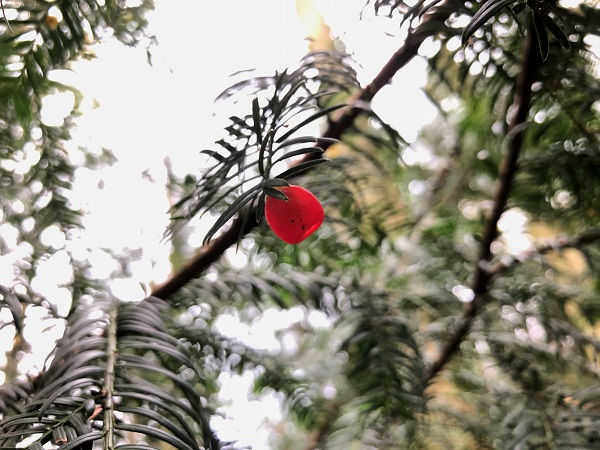 From late spring, small green acorn-like structures appear on the female trees. The "cup" swells around the seed and ripens to soft, juicy red flesh called an aril. The aril does not entirely cover the seed, which can be seen clearly when looking at the bottom of the fruit. The flesh inside the aril is very slimy. |
Possible lookalikes 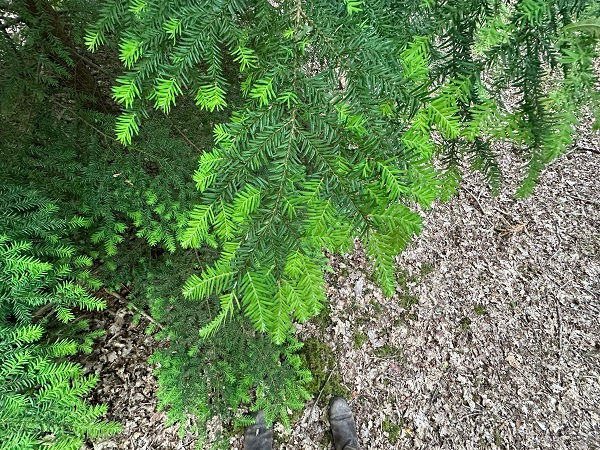 Easily confused with other yews, firs and fir relatives. Firs and their relatives, such as western hemlock (Tsuga hetrophylla), pictured, can be distinguished from yew by two silvery lines on the underside of their needles. The firs also have very citrusy aromas, while yew has a less pleasant smell. |
Poisonous parts All of parts of the tree are deadly poisonous, with the exception of the fleshy aril surrounding the seeds. If the aril, which is very sweet, is to be consumed, the seed must be spat out. It was once believed that a swallowed seed would pass through the digestive tract intact. However, this is now thought to be untrue. Yew has evolved to have its seeds dispersed by birds, which lack the necessary digestive chemicals to break down the seed wall. However, the digestive chemicals in a mammalian gut are thought to be able to do this.
Although there is no evidence that fungi growing on or around English yew take up any toxins from the tree, there is no decisive evidence that they do not. If anybody knows of any, we would be most grateful for a link. But, mushrooms can engulf leaf litter, twigs, and bark readily, so there could be bits of English yew encased within a mushroom that has formed on or near it Use in herbal medicine and medicine Despite its severe toxicity, English yew has been used to treat a variety of ailments from chest infections to heart conditions. However, its most famous medicinal use is in the treatment of cancer. The taxane Docetaxel, was originally extracted from the bark of the English yew to produce the chemotherapy drug Taxotere. The drug is almost entirely synthetic now, but clippings are still used in the process. Taxotere is used to treat numerous cancers including breast, ovarian, bladder, prostate, and lung. The taxane Paclitaxel (trade name Taxol) has its origins in the bark of English yew's relative Pacific yew (Taxus brevifolia).
This tree is deadly poisonous
If you are suffering from any ailment or need medical advice, please see your General Practitioner.
Hazards This tree is deadly poisonous. Those choosing to consume the arils of this tree must ensure they are not swallowing any seed or other material of the yew
Other uses The heartwood of English yew is strong and flexible, so highly desired by wood turners. It has been used to make furniture, plates and goblets - although there is some debate over the safety of this. Historically, it was used to make longbows. As a firewood it burns hot and long, but it should only be used in closed-door wood burners as the fumes are believed to be toxic Importance to other species Supports various organisms including fungi, insects and birds
Always stay safe when foraging. You need to be 100% sure of your identification, 100% sure that your foraged item is edible, and 100% sure that you are not allergic to it (it is good practice to always try a small amount of any new food you are consuming). If in doubt, leave it out!

Comments